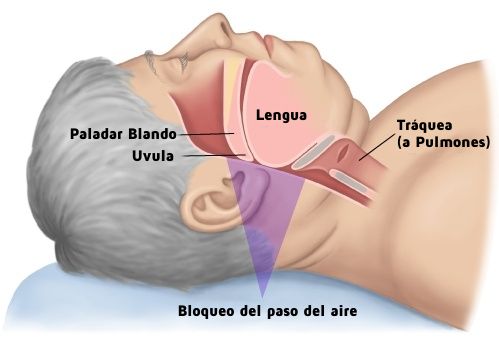
80% of people who snore have apnea. Snoring is a warning sign that you may have obstructive sleep apnea. Approximately 15% of adults have obstructive sleep apnea. Obstructive sleep apnea is a frequent respiratory disease that can affect your sleep, your health and your quality of life.
Apnea is the cessation of breathing for more than 10 seconds. People with obstructive sleep apnea can become completely obstructed and stop breathing for a period of time. This can lead to excessive drowsiness during the day, irritability, fragmented sleep due to micro-awakenings, morning headaches, very strong snoring that can cause social isolation and even divorce, and is associated with diseases such as heart attack, memory loss, cerebral embolism, intellectual impairment, high blood pressure, sexual impotence as well as motor vehicle crashes from falling asleep while driving.
This disease can affect both children and adults, in children is cured with adenoidectomy surgery and tonsillectomy which is very effective on them, although it can also be treated with medical treatment.
In adults, treatment can be both medical and surgical. The reason for whether the treatment for you is medical or surgical lies in the severity and clinical stage in which you are. For this it is very important to perform an Ambulatory Polysomnography which is the best study to determine the severity of your disease, and if you are a candidate for medical treatment or surgery. This study is done at your home and you do not have to go to any hospital to do it. There is another very important study, the endoscopy under sedation, where we can observe which is the obstruction site that the patient has while snoring, and helps to specify the área for surgical treatment. Not all patients are candidates for sleep apnea surgery and that should be decided by your doctor as the case may be.
Among the medical treatments we can find the CPAP, which is the one with best results. It is a device that produces positive pressure of continuous air while sleeping, decreasing the snoring and apneas and lowering the risks of cardiovascular diseases.
Among the surgical treatments are uvulopalatopharyngoplasty, which consists of trimming the soft palate and removing the tonsils to enlarge the throat. Other minimally invasive procedures are radiofrequency on the palate, tongue and turbinates.
The correction of the septum and turbinates is very important in patients who have sleep apnea and snoring, as it helps to tolerate more as much medical treatment as the surgeries of the palate and the tongue.
Procedures related to Sleep Apnea
- Tonsillectomy
- Adenoidectomy
- Uvulopalatopharyngoplasty
- Uvulopalatoplasty
- Sclerotherapy on the palate
- Radiofrequency on the palate
- Radiofrequency at the base of the tongue
- Implants on the palate
- posterior glosectomy
- Suspension of the base of the tongue
- Maxillomandibular advancement
- Application of cpap with different masks
- Application of oral prostheses to stop snoring
- Sleep studies with ambulatory polysomnography
- Endoscopy under sedation in patients with sleep apnea
